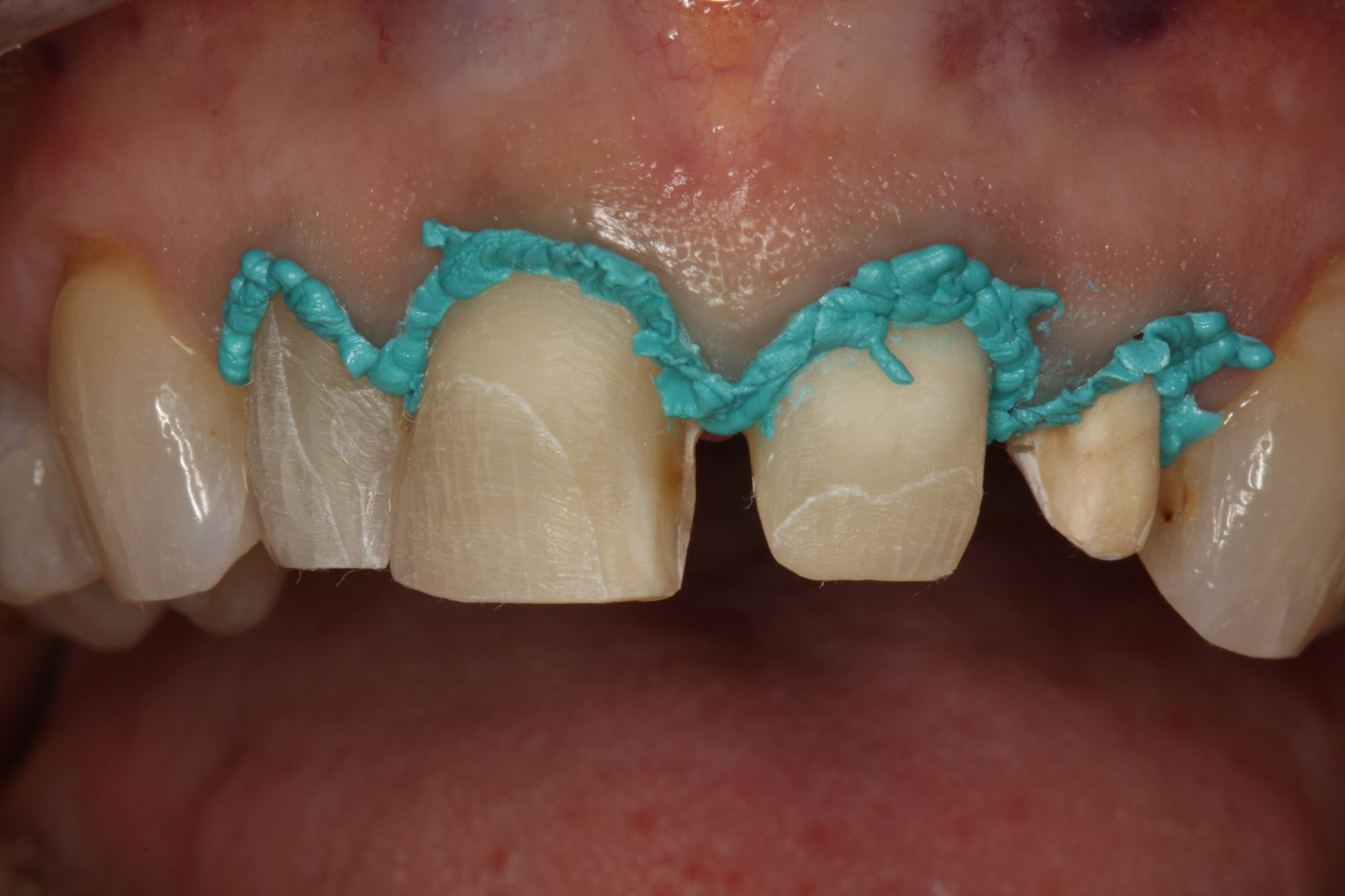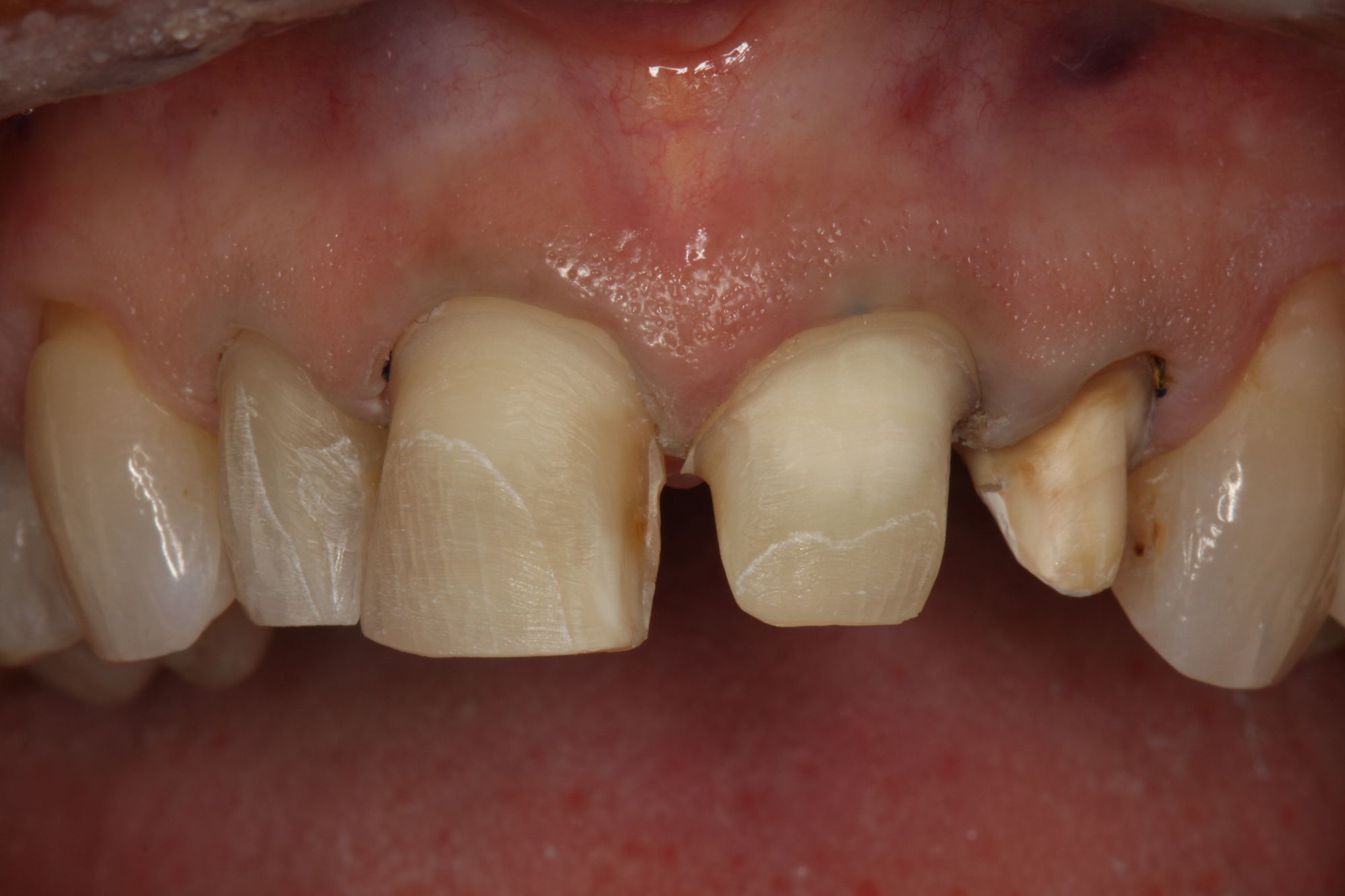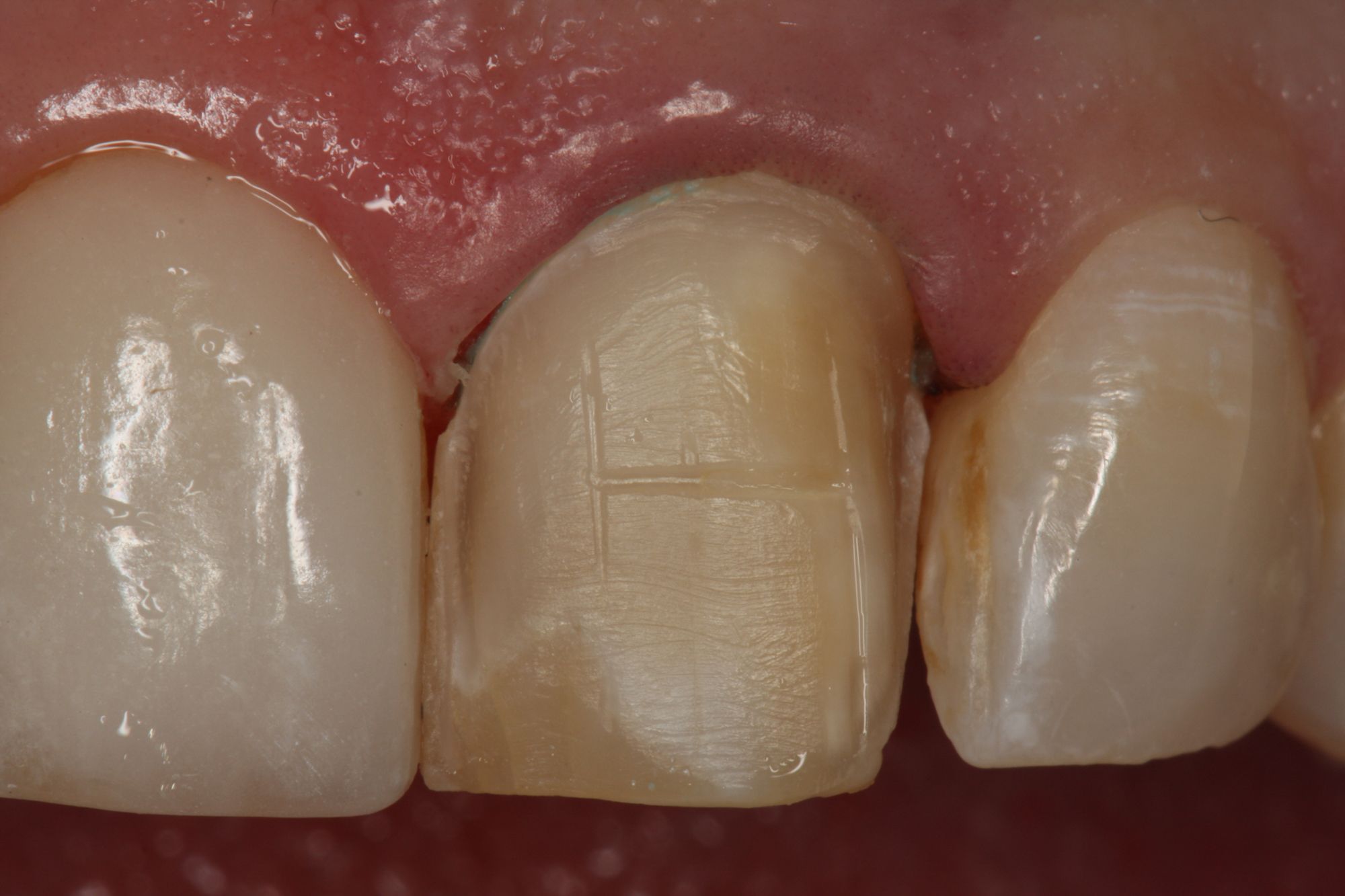Excellent dentistry requires great attention to detail. One of our many clinical challenges is working in an environment that includes not only moisture but blood. As challenging as this is, it is complicated by the fact that most dental materials are negatively affected by blood and moisture. As dentists, we fight this battle of blood and moisture control several times a day to maximize the effectiveness of our most common materials.
VOCO Retraction Paste
VOCO Retraction Paste is an astringent paste with aluminum chloride. It is designed to widen and dry the gingival sulcus, creating the ideal conditions for accurate, successful digital or conventional impressions. The material is a bright turquoise color, providing high contrast to tooth structure and gingiva and ensuring that the paste is visible and can be easily rinsed off after only 1 to 2 minutes. It is said to save clinicians up to 50% of procedural time compared with other methods and can be used as a replacement for or in conjunction with a retraction cord. It features a custom-engineered capsule with a long, fine, flexible plastic tip with a rounded edge rather than metal that is said to avoid damage to the gingiva and allows for precise application. Its 2-stage viscosity makes for simple application.
VOCO America Inc
888-658-2584 | vocoamerica.com
We are further challenged when restoring parts of the tooth that fall at or below the gum line. During this procedure, we try to gain visual access of the gum line for many clinical reasons and maintain control of any bleeding. This access almost always results in more bleeding and the need for more effective moisture control.
Today we have a variety of options for controlling moisture and bleeding. We need to pick the option that will produce the desired result in each situation.
Retraction cord has been used for many years to displace gingival tissue and help control hemorrhaging. Although effective, it is technique-sensitive, time-consuming, and often uncomfortable for the patient during and after the procedure. Another common option is electrosurgery (laser surgery) to remove excess soft tissue or control bleeding. In addition, selective infiltration using 2% lidocaine with 1:100,000 or 1:50,000 epinephrine is an effective method of hemorrhage control.
Retraction pastes have recently become an excellent option for many clinical situations. Retraction pastes have existed in the dental market for 20 years, but in the past 5 years, companies have perfected the material to make it more clinically effective and affordable. Retraction paste performs 2 significant clinical functions. First, it serves as an atraumatic option to displace sulcular tissue. Second, it is an effective hemostatic agent to help control bleeding. In addition, retraction paste is faster and easier to apply than retraction cord.
VOCO America recently introduced their retraction paste to the market, touting the product’s excellent hemostasis due to the incorporation of aluminum chloride within the paste. Aluminum chloride will not only stop hemorrhaging at the operative site but dry the area to provide a clean field of view. The paste has a unique fluidity; it flows easily from the cap with little force but within a minute of placement becomes firmer and effectively displaces the sulcular tissue. Its capsule enhances clinical performance and features a soft, long, and flexible tip that guides the exact placement of the material. Its highly visible turquoise color makes it easy to identify in the mouth. Finally, the material rinses off easily and completely with minimal effort, leaving no postoperative stain.
Clinical Applications
The most common use of retraction paste is in the impression-taking workflow. Two important criteria for capturing good impressions are visualization of all margins and complete control of sulcular fluids. Retraction pastes are highly effective in achieving this goal.
First, retraction paste is placed in preparation to take the final impression (Figure 1).
The paste stays in place for 1 to 2 minutes before being rinsed off with an aggressive air/water spray. The retraction paste provides a clean and optimized operative field to take the final impression and composes part of an optional, though useful technique: a combination of retraction paste and traditional retraction cord (Figure 2).
This technique modifies the 2-cord impression technique that was the gold standard for many years. In the modified technique, the dentist places a retraction cord (Ultradent UltraPak #00), finalizes the margins of the preparation, then places the retraction paste on top of the retraction cord prior to taking the final impression. This technique is much faster and less traumatic to the soft tissue than using the cord without paste.
With digital impression scanners becoming more common in dental practices, retraction paste is a great clinical accessory for digital scanning. Ease of use, speed, effective retraction, and sulcular fluid control make it a natural fit for the fast and comfortable experience of digital scanning.
When cementing a bonded restoration, any contamination of the preparation during the bonding process can negatively affect the longevity of the bond. Using a retraction paste prior to bonding can optimize the area so there are no contamination concerns. A tooth is then prepared for a veneer, ready to be bonded in place using a resin cement (Figure 3).
During the temporization process, the tissue may become inflamed and irritated due to poor home care. The retraction paste can stop the tissue hemorrhage prior to bonding. Retraction paste helps create a more ideal environment for the bonding process (Figure 4).
Another restorative situation that benefits from retraction paste is the direct composite restoration, commonly used in Class II situations when replacing an old restoration. Once the old restoration is removed, the interproximal area may bleed and be irritated from a poor fitting and/or iatrogenic soft tissue trauma caused by the preparation process. The dentist should use retraction paste before applying the matrix system to stop localized bleeding and create a better working field for the bonding process of the composite resin. Similarly, the addition of retraction paste to the workflow makes Class V restorations at or near the soft tissue margin easier during preparation and procedure.
Retraction paste is a beneficial tool in the restorative dentist’s toolbox. In the appropriate clinical situation, it provides an optimal result with a quick and atraumatic procedure. VOCO’s recent addition to retraction pastes raises the bar for restorations with a dentist- and patient-friendly product.





